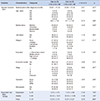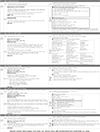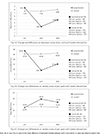2. Korean Breast Cancer Society. Breast cancer facts & figures 2014. Seoul: Breast Cancer Society;2014.
3. Lee A, Moon BI. Chemotherapy in breast cancer. Ewha Med J. 2014; 37:75–82.

4. Kim GD, Kim KH. Symptom cluster and quality of life in patients with breast cancer undergoing chemotherapy. Korean J Adult Nurs. 2011; 23:434–445.
5. Park JH, Jun EY, Kang MY, Joung YS, Kim GS. Symptom experience and quality of life in breast cancer survivors. J Korean Acad Nurs. 2009; 39:613–621.

6. Ha EH, Lee SH, Jeong J, Lee HD, Lee JE, Nam SJ, et al. Biopsychosocial predictors of the quality of life in breast cancer patients. J Breast Cancer. 2010; 13:219–226.

7. Shin AM, Park JS. The effects of hope intervention on hope and depression of cancer patients staying at home. J Korean Acad Nurs. 2007; 37:994–1002.

8. Yang JH, Kim OS. The structural equation model on resilience of breast cancer patients receiving chemotherapy. J Korean Acad Nurs. 2016; 46:327–337.

9. Peterson DB, Hicks MD. Leader as coach: strategies for coaching and developing others. Minneapolis, MN: Personal Decisions International;1996.
10. Hwang JY. Effects of group coaching program on self-esteem, subjective-wellbeing, depression for middle-aged housewives [dissertation]. Seoul: Kwangwoon Univ.;2012.
11. Kim S, Kim HS, Cheong HY. Effects of a coaching-based childbirth program on anxiety and childbirth self-efficacy among primigravida women. Korean J Women Health Nurs. 2011; 17:369–377.

12. Burhouse A, Rowland M, Marie Niman H, Abraham D, Collins E, Matthews H, et al. Coaching for recovery: a quality improvement project in mental healthcare. BMJ Qual Improv Rep. 2015; 4:u206576.w2641.

13. Ko JM, Lee JK. Effects of a coaching program on comprehensive lifestyle modification for women with gestational diabetes mellitus. J Korean Acad Nurs. 2014; 44:672–681.

14. O'Neil A, Hawkes AL, Atherton JJ, Patrao TA, Sanderson K, Wolfe R, et al. Telephone-delivered health coaching improves anxiety outcomes after myocardial infarction: the ‘ProActive Heart’trial. Eur J Prev Cardiol. 2014; 21:30–38.
15. Naik AD, White CD, Robertson SM, Armento ME, Lawrence B, Stelljes LA, et al. Behavioral health coaching for rural-living older adults with diabetes and depression: an open pilot of the HOPE Study. BMC Geriatr. 2012; 12:37.

16. Kim YH. The effects of psychological nursing intervention program on psychological distress and quality of life in women with breast cancer undergoing chemotherapy [dissertation]. Seoul: Chung-Ang Univ.;2013.
17. Britton JJ. Effective group coaching: tried and tested tools and resources for optimum group coaching results. Mississauga: John Wiley & Sons;2010.
18. Park JY. A study for developing an effective group coaching process. J Korean Coaching Res. 2010; 3:41–64.
19. Go YG, Kim KI, Kim JY. Optimizing strategies for adolescent health behavior using message framing and mental fitness techniques. Seoul: Korea Institute for Health and Social Affairs;2009.
20. Rehse B, Pukrop R. Effects of psychosocial interventions on quality of life in adult cancer patients: meta analysis of 37 published controlled outcome studies. Patient Educ Couns. 2003; 50:179–186.

21. Lee SD. The number of patients who visited our hospital last year was about 305 million. Asan Med Cent Newsmag. 2017; 550:2.
22. Sellick SM, Crooks DL. Depression and cancer: an appraisal of the literature for prevalence, detection, and practice guideline development for psychological interventions. Psychooncology. 1999; 8:315–333.

23. McNair DM, Lorr M, Droppleman LF. Profile of moods states. San Diego, CA: Educational and Industrial Testing Service;1971.
24. Yeun EJ, Shin-Park KK. Verification of the profile of mood statesbrief: cross-cultural analysis. J Clin Psychol. 2006; 62:1173–1180.

25. Spielberger CD. Anxiety: state-trate-process. In : Spielberger CD, Saranson IG, editors. Stress and anxiety. New York, NY: John Wiley & Sons;1975. p. 115–143.
26. Kim JT, Shin DG. A study based on the standardization of the STAI for Korea. New Med J. 1978; 21:69–75.
27. Snyder CR, Sympson SC, Ybasco FC, Borders TF, Babyak MA, Higgins RL. Development and validation of the state hope scale. J Pers Soc Psychol. 1996; 70:321–335.

28. Kim TH. The effects of hope and meaning of life on adolescent's resilience [dissertation]. Seoul: Hanyang Univ.;2004.
29. Wilkie D, Berry D, Cain K, Huang HY, Mekwa J, Lewis F, et al. Effects of coaching patients with lung cancer to report cancer pain. West J Nurs Res. 2010; 32:23–46.

30. Tae YS, Youn SJ. Effects of a forgiveness nursing intervention program on hope and quality of life in woman cancer patients. Asian Oncol Nurs. 2006; 6:111–120.






 PDF
PDF ePub
ePub Citation
Citation Print
Print






 XML Download
XML Download